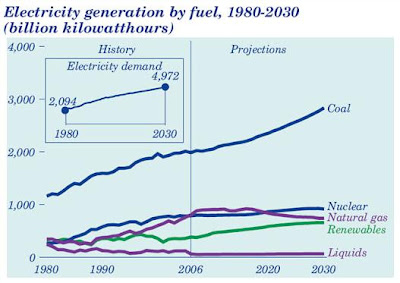The problem we are facing regarding environmental challenges, such as climate change, is not solely the onset of such dramatic shifts in global trends, but is the ill-devised approach to dealing with these issues.
Lets take the example of carbon dioxide emissions that have been linked to climate change and may very well be the amplifier of global warming. The approach that major stakeholders are taking doesn’t seem to be so much as a move to cleaner, more sustainable fuels than it is a move from oil-reliant technologies, and the reliance on foreign energy sources. This kind of mentality seems to be driven primarily by international politics and the fact that reliance upon international energy sources is not politically or economically stable.
The question begs, why not resort to alternative fuels that will allow nations to be independent of one another? Well, with that kind of mentality driving innovation we may find ourselves falling backwards in our greenness and the greenness of our energy technologies, by resorting to less viable energy sources, that in fact can be even more harmful to human health and the environment either directly or indirectly.
One very important concept to understand before we proceed is that we will not be running out of oil any time soon (just over 42 years – not a lot though). This may come as a shock, but it is true. What we will be running out of is economically viable sources of oil and other fossil fuels. What this means is that oil will still exist past the “oil crisis”, but will not provide the desirable return on investment from extracting such fuels as oil, and tar sands. This concept is referred to as the EROI or Energy Return On Investment. In this case, investment not only means financial, but also energy investment.
After all, as it costs money to make money, it costs energy to get energy. Lets start off with oil, which has an EROI of 1:20 globally. This means that for every unit of energy spent to extract crude oil, 20 units of energy are gained. This doesn’t seem too dire, but consider that it used to get 1:60 a couple of decades ago.

With the current EROI of oil in mind, lets take a look at some of the alternatives to crude oil and how it measures up. Now, you will notice that I will not be discuss wind energy, or solar energy because neither technology is really being given much attention by the big energy companies who hold just short of a monopoly on the market. Because of that, advancement of these technologies is not moving at the speed that would be accomplished had there been a stronger focus on these truly renewable, sustainable, and unlimited sources of energy.
As for some of these new technologies that are being labeled as “green”, “environmentally friendly”, or “Eco-conscious,” in fact still derive their energy from not so green sources, or non-viable environmental resources. Lets take ethanol for example, which is an extraction of corn through a distillation process. This fuel source has an EROI of close to 1:1, which is not at all viable. We’d be better off preserving the energy that goes into growing, farming, and cultivation, which by the way is done by machines that run dirty inefficient fossil fuels. In addition to the ill-planned “greenness” of ethanol production, cutting into food staple yields for fuel production creates a tight food budget, driving up food costs, and placing a greater demand on other grains. Not to mention that these grains are often transported long distances consuming energy in the process and affecting fuel prices, and the cycle goes on.
But it’s a cleaner fuel, well not really… Continue reading
Filed under: Alternative energy, CLIMATE CHANGE, Coal, ECO-FRIENDLY Alternatives, ECONOMICS, Electricity, ENERGY, Fossil Fuels, Global Warming, Greenhouse Gases, Solar Energy, TRANSPORTATION, Wind | Leave a comment »


